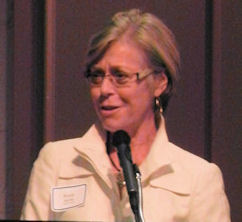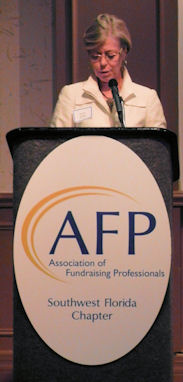
So you want to implement a moves management system to ensure you are focusing on your best major gift prospects. Or you have a system, but you want to make it better. Good for you!
Moves Management is a Workout!
First, recognize that a moves management system is not a magical system where elves enter all your data and print reports whilst you sleep. Using a moves management system to track donor prospects is like getting physically fit – you have to workout! It requires you to:
- Enter information on each donor prospect record – at least:
- Capacity rating, target ask, prospect stage, affinity/propensity
- Record your visits – you want to be sure:
- Outcomes met the purpose
- Advanced the prospect relationship
- Something new was learned or
- Contact resulted in a next step
- Periodically review your progress and start over at #1
- Regular, internal prospect review meetings (at least monthly)
Assess Your Needs and Resources
Sometimes when you first start exercising, you find that you are so, so tired and wonder if getting fit will ever give you more energy and finely-toned muscles. It will! But you have to slog through the first bit of work. That said, you can’t swim across the English Channel tomorrow if today you are struggling to swim across the pool. Assess your needs and resources:
- Are you starting from scratch or have you already been tracking prospects somewhere?
- Tweaking a system is often easier than starting new
- Will gift officers be tasked with entering tracking info plus their prospect actions, or is there another staff member available?
- Assigning some data entry to other staff, especially on newly identified prospects, keeps down the grumbling and frees up your gift officers to go and get those major gifts – no excuses!
- Do you have many solicitors, or just a few?
- When the office is small, it’s best to keep things as simple as possible
- Is this for ongoing major gifts or a campaign?
- While similar, a campaign may warrant a higher degree of tracking
You Will be Tweaking
As you choose a combination of database fields and database reports (or maybe Excel lists and calendars if you are very small) together with your regular prospect reviews, you *should* find yourself tweaking the moves management system. For example, you might realize you are re-visiting disqualified prospects and decide to change your prospect stage like this:
| First Method | Second Method |
| Identified
Cultivation Solicitation Stewardship |
Identified
Qualified Cultivation Solicitation Stewardship Disqualified |
This is a natural progression in your use of your system. Or maybe you find that it takes forever to enter the information in various fields around your donor database record and decide to limit your tracking to a few key pieces all in one easy-to-enter place in the database. Or maybe you find that monthly meetings are not enough and weekly meetings would keep everyone where they need to be with their prospect list.
Ask any fitness freak – taking the time to understand the best times and types of exercise for yourself makes all the difference in achieving your goals. Taking the time to get your system customized to your fundraising culture and constituents will make all the difference in whether you achieve your major gift goals. Not everyone has washboard abs and not every nonprofit has an efficient, high-performing major gifts program!
Give Yourself a Generous Year
Give yourself at least a year from your first effort to get the system really working smoothly. If it’s not working after a year, take a hard look at whether you (a) really need a system or (2) have put the right kind of effort into it. If you are a one-person shop cultivating ten people across the year, you can keep a lot of that in your head and your calendar. If you have multiple solicitors and/or need to boost your total prospect numbers (those under identification, cultivation and stewardship), you won’t be effective without a system.
Consider Getting a Coach
Olympic athletes wouldn’t dream of training and competing without a coach. Even the most dedicated athletes find themselves tired and frustrated, unable to “see” what is holding them back. A coach can keep your spirits up, redirect your efforts to keep you performing, and, step-by-step, help you reach ever higher goals.
If you are determined to reach your major gift goals, but find yourself unable to wrap your hands around moves management or even identifying good prospects to track, contact Aspire Research Group. We specializing in helping fundraisers reach their goals, guiding you comfortably every step of the way. Call (727) 231-0516 or email jen at aspireresearchgroup.com.
For more blog posts on moves management, click here: Moves Management









